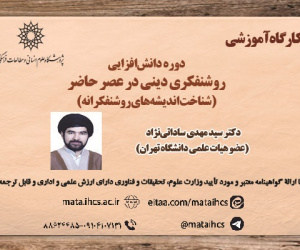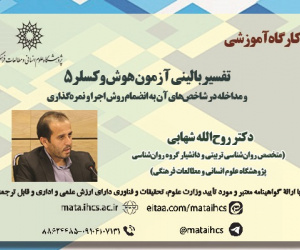طراحی الگوی نظام آموزشی مبتنی بر راهبری استعداد کودکان (مقاله علمی وزارت علوم)
درجه علمی: نشریه علمی (وزارت علوم)
آرشیو
چکیده
مقدمه و هدف: ارائه خدمات آموزشی باکیفیت و طراحی برنامه های ویژه برای کشف علایق و استعدادهای دانش آموزان، به بهبود دستاوردهای تحصیلی و رشد فردی آن ها کمک می کند. مهدهای کودک با اجرای سیستم مدیریت اثربخش می توانند زمینه راهبری استعداد کودکان را فراهم کنند. هدف مطالعه حاضر طراحی الگوی نظام آموزشی مبتنی بر راهبری استعداد کودکان است. روش شناسی پژوهش: این پژوهش، از لحاظ هدف، کاربردی و از منظر گردآوری داده ها، از نوع کیفی است. جامعه آماری متشکل از خبرگان و اساتید دانشگاهی دارای تخصص در زمینه آموزش کودکان، مدیریت استعداد، رشد کودکان بودند. ابزار گردآوری داده ها مصاحبه نیمه ساختاریافته بود که جهت سنجش روایی آن از ارزیابی قضاوت خبرگان استفاده شد و برای محاسبه پایایی، از میان مصاحبه های انجام گرفته چند مصاحبه به عنوان نمونه انتخاب و هر کدام از آن ها در یک فاصله زمانی کوتاه و مشخص دو بار کدگذاری شدند و میزان توافق بین این کدگذاری ها مبنای محاسبه پایایی قرار گرفت. یافته ها: نتایج نشان داد که الگوی نظام آموزشی مبتنی بر راهبری استعداد کودکان شامل 6 بعد فلسفی و اهداف آموزشی، محتوایی و برنامه ریزی درسی، انسانی و نیروی انسانی، مالی و منابع، فناوری و نوآوری، ارزیابی و کیفیت سنجی و هفده مولفه فلسفه آموزشی، اهداف آموزشی، اهداف برنامه درسی، محتوای برنامه درسی، راهبردهای یاددهی – یادگیری، آموزش و حمایت از معلمان، ویژگی های معلمان، ویژگی های مدیر مهد کودک، بودجه ریزی هدفمند، تامین منابع آموزشی، سرمایه گذاری در فناوری و نوآوری، ابزارهای استعدادیابی و تحلیل داده ها، آموزش معلمان در فناوری، ارزیابی چندبُعدی، ارزیابی تکوینی (فرآیندمحور)، ارزیابی مشارکتی، ابزارهای ارزیابی متنوع بود.Designing an educational system model based on guiding children's talent
Background and Objective: High-quality educational services and the design of specialized programs to identify students' interests and talents contribute to enhancing their academic achievements and personal growth. By implementing effective management systems, kindergartens can create an environment conducive to nurturing children's talents. The aim of the present study was to design an educational framework based on talent development in children.
research methodology : This research, in terms of its objective, was applied, and with regard to the data collection method, it was descriptive. Additionally, in terms of the nature of the data, it was qualitative. The study population consisted of experts and university professors specializing in child education, talent management, and child development. The data collection tool was semi-structured interviews. To assess the validity of the interviews, expert evaluations were used, and for reliability, a sample of interviews was selected and coded twice within a short, specified time interval. The inter-coder agreement between these two rounds of coding served as the basis for calculating reliability.
Findings: The results indicated that the educational system model based on nurturing children's talents includes six dimensions: philosophical and educational goals, content and curriculum planning, human resources, financial resources, technology and innovation, and evaluation and quality assessment. Additionally, it encompasses seventeen components: educational philosophy, educational goals, curriculum objectives, curriculum content, teaching-learning strategies, teacher training and support, teacher characteristics, preschool director characteristics, targeted budgeting, provision of educational resources, investment in technology and innovation, talent identification tools and data analysis, teacher training in technology, multidimensional assessment, formative (process-oriented) assessment, collaborative assessment, and diverse assessment tools .
Conclusion: This study aims to provide a framework for more effective management of children's talents in kindergartens and to assist in the better development of children in this age group. Additionally, it addresses one of the most important demands of parents regarding talent identification for their children. The results of this study could yield significant achievements in defining and implementing talent identification programs in kindergartens.







